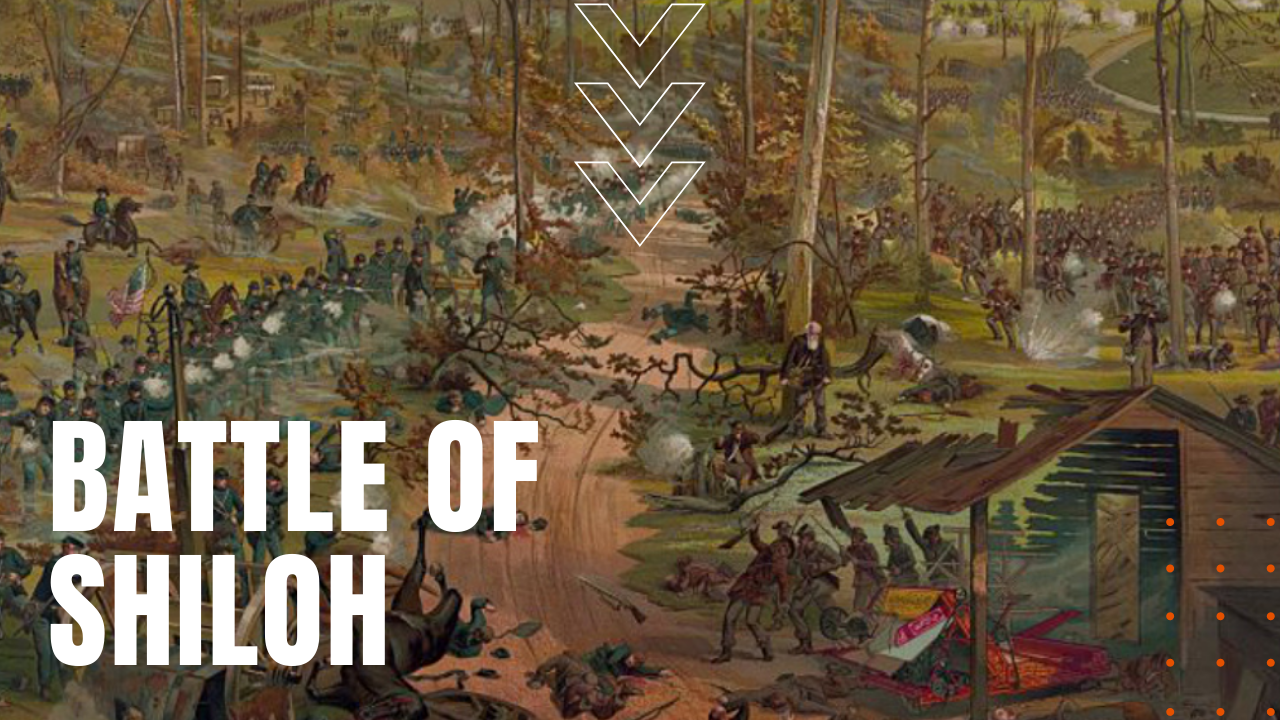Battle of Shiloh

For the six months leading up to April of 1862, Union troops had successfully swept up the Tennessee and Cumberland Rivers, taking control of Kentucky and much of Tennessee, including the state capital at Nashville.
Following General Ulysses S. Grant’s February victories at Fort Henry and Fort Donelson, Confederate General Albert Sidney Johnston’s 45,000-man army slowly reassembled at Corinth Mississippi, which soon became the focused objective of Grant’s 42,000-man army and General Don Carlos Buell’s 20,000-man force. Seeing the writing on the wall, Johnston chose a surprise attack before Grant and Buell could unify their forces.
The Battle of Shiloh
Conducting a dawn patrol on April 6th, 1862, Union soldiers stumbled upon a battle-ready Confederate line just a mile from the Union Army’s main encampment, and when Johnston’s men attacked, the disoriented bluecoats were driven back toward Shiloh Church.
Before long, Grant’s entire force was pushed back by Johnston’s aggressive offensive, and while a complete Confederate victory seemed evermore eminent, Buell’s forces began to arrive to shore up the failing Union line. By mid-afternoon, Johnston took to the field to direct a Confederate assault on the weakest part of the Union line, until he was struck in the leg by a bullet, which severed an artery with fatal consequence. By the end of the American Civil War, Johnston’s death gained him the dubious distinction as the highest-ranking general on either side killed during the bloodiest conflict in American history.
His replacement that day, General Pierre G.T. Beauregard, halted the Confederate advance by nightfall, but not before driving the Union army back two miles to Pittsburgh Landing. Now combined with the full force of Buell’s army who had arrived after dark on April 6th, Grant engaged in an overwhelming counterattack the following day, which forced exhausted Confederate troops back toward Shiloh Church, retracing their steps through hard-earned battlefields from the day before.
Who Won the Battle of Shiloh?
April 7th would prove to be a decisive victory for Grant and the Union cause, but not without a combined casualty count of 23,000 men killed, captured, wounded or missing, witnessing a level of violence nearly twice as egregious than earlier battles at Bull Run, Wilson’s Creek, Fort Donelson and Pea Ridge, at the same time sending a collective wave of horror through Northerners and Southerners alike.
